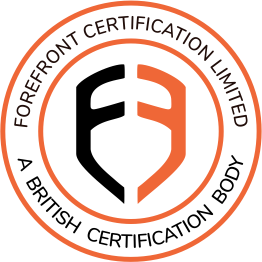ISO 45001 LEAD AUDITOR COURSE
The aim of this course is to provide delegates with the knowledge and skills required to perform first, second and third-party audits of occupational health and safety (OH&S) management systems against ISO 45001, in accordance with ISO 19011 and ISO/IEC 17021, as applicable.
The course is based on the IRCA specification – PR357 ISO 45001:2018 Lead Auditor.
More Information
- The purpose of an OH&S management system, of OH&S management system standards, of management system audit, of third-party certification, and the business benefits of improved performance of the OH&S management system.
- The role of an auditor to plan, conduct, report and follow up an OH&S management system audit in accordance with ISO 19011 and ISO/IEC 17021, as appropriate.
- Develop skills to plan, conduct, report and follow-up an audit of an OH&S management system to establish conformity (or otherwise) with ISO 45001, and in accordance with ISO 19011 and ISO/IEC 17021 where appropriate.
- Understanding ISO 45001 –
- The Plan-Do-Check-Act cycle and its application to OH&S management processes.
- The processes involved in establishing, implementing, operating, monitoring, measuring, analysing, evaluating, reviewing, maintaining and improving an OH&S management system, including the significance of these for OHSMS auditors.
- The terms and definitions used in ISO 45001.
- The requirements for OH&S management system documentation and the difference between maintaining and retaining documented information.
- The purposes of a differences between first-party, second-party and third-party certification audit of management systems.
- The role of the OHSMS auditor in evaluating an organisation’s ability to meet its legal and other requirements, including the difference between this role and the regulatory role of evaluating legal compliance.
- The benefits of third-party accredited certification of occupational health and safety management systems for organisations and interested parties.
- The audit process:
- Determining audit objectives – the purpose and significance of the audit scope and criteria
- Identifying the appropriate personnel for the audit, the importance of auditor and audit team competence, and the selection of team members particularly with regard to knowledge of the relevant management system discipline, industry sector, regulations and legislation, and auditor training. Outline different audit methods; including on-site and remote audits and audit activities requiring human interaction and no human interaction.
- The purpose of a stage 1 audit, including the documented information review, and describe a typical stage 1 audit process and outputs.
- Preparing for a stage 2 audit, including preparing an audit plan.
- Conducting on-site audit activities, including preparing working documents, conducting audit meetings, gathering and verifying audit evidence, preparing, approving and distributing the audit report, and conducting the audit follow up.
- Auditor responsibilities:
- The roles and responsibilities of the audit client, auditors, lead auditors, technical experts, auditees, guides and observers.
- The management responsibilities of the Lead Auditor in managing the audit and the audit team.
- The need for effective communication with the auditee throughout the audit process.
- The need for auditor confidentiality and other professional behaviours.
- Planning, conducting, reporting and follow-up of audits of an OH&S management system.
- Planning the audit
- Conducting the audit
- Auditing OH&S management system requirements
- Generating audit findings
- Reporting the audit
- Following up the audit
Who is the course intended for?
New lead auditors for OH&S management systems. Delegates may have attended Internal Auditor training in the past and wish to advance their knowledge and skills.
Pre-requisites:
Recommended – ISO 45001:2018 Foundation Course
Required Knowledge of
- The Plan, Do, Check, Act (PDCA) cycle,
- The core elements of a management system and the interrelationship between top management responsibility, policy, objectives, planning, implementation, measurement, review and continual improvement.
- OH&S management – the concepts of managing occupational health and safety through hazard identification, risk assessment and risk control and compliance with legal requirements and other requirements.
- The relationship between OH&S management and the provision of safe and healthy workplaces, the prevention of work-related injury and ill health, and the proactive improvement of health and safety performance.
- Common examples of relevant national and local OH&S legislation and requirements
- Knowledge of the requirements of ISO 45001 and the commonly used OH&S management terms and definitions
Course Assessment and Accreditation:
Continuous assessment and a 2 hour examination
No product found.

